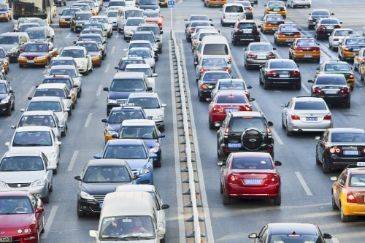While the country is slowly opening back up from quarantine, we are all still feeling the effects that COVID-19 has had on our communities. One of the areas impacted has been our roadways. When Colorado, like most other states, went into lockdown, people were instructed to stay at home as much as possible. With so few people traveling to work in the morning, the streets were left empty. To many negligent drivers, empty streets mean one thing: speeding.
COVID-19 Leaves Empty Streets
 Lockdown orders in April impacted roughly 96% of the American population, according to the National Conference of State Legislatures (NCSL). This means that for a period of time, nearly all Americans were instructed to stay home at all costs. This order resulted in extreme decreases in traffic across every state. In fact, in some states, the traffic dropped a staggering 63%, according to the NCSL. While traffic has since begun to rise as more of the state opens back up, the levels have yet to reach where they were at pre-shutdown. While this has been a nice change of pace for those who have had to continue to commute to work every day, the empty streets have led to an unexpected problem: speeding.
Lockdown orders in April impacted roughly 96% of the American population, according to the National Conference of State Legislatures (NCSL). This means that for a period of time, nearly all Americans were instructed to stay home at all costs. This order resulted in extreme decreases in traffic across every state. In fact, in some states, the traffic dropped a staggering 63%, according to the NCSL. While traffic has since begun to rise as more of the state opens back up, the levels have yet to reach where they were at pre-shutdown. While this has been a nice change of pace for those who have had to continue to commute to work every day, the empty streets have led to an unexpected problem: speeding.
The Speeding Begins
With the streets empty before them, many negligent drivers in Colorado seized on the opportunity to get to their destinations faster than ever. In some states, such as Arizona, speeds have overall increased by 12%. Colorado is no exception to this sudden spike. While 12% may seem like a low number, it actually has alarming implications. Generally, a highway speed limit is about 65 mph. A 12% increase in speed means that those going the speed limit before are now traveling 73 mph. Of course, those who were already speeding, say at 75 mph, are now going 84 mph. While that may not sound like a large increase, an extra 8 or 9 mph can have disastrous results, especially if the speeding driver causes a car accident.
When Speeding Leads to Accidents
What many do not realize about speeding is that even going the speed limit can still be dangerous. At 60 mph, a driver is traveling 88 feet per second. That means it takes the brakes 5 seconds to bring the car to a full stop, so the driver will need at least 440 feet to stop without causing a collision. The faster the driver is going, even “just” 8 or 9 mph more, the more space he will need to come to a complete stop.
On top of that, a high-speed collision is always more devastating than a slow speed one. The faster a car is going, the more momentum it builds up. When this momentum is suddenly stopped, as in a car accident, the resulting force travels through the objects that stopped the car. If the objects are a rider and motorcycle, or a group of pedestrians, then the resulting damage will be devastating. The human body is only meant to take so much force. A high-speed impact can easily lead to debilitating injuries such as:
- Brain damage
- Crush injuries
- Internal bleeding
- Loss of limb
- Organ damage
- Spinal cord injuries
Of course, that’s just for the victims who survive. Countless people are killed every year due to drivers who speed. According to a report from the National Safety Council (NSC), fatality rates due to speeding have increased by 14% since the lockdown first began in March. This despite the fact that there are overall fewer people on the road currently. Clearly, the spike in speeding has had a debilitating impact on the safety of our roadways.
We at The Bussey Law Firm, P.C., understand the devastation of losing a loved one to such a brutal accident. While we cannot undo what has been done, we can offer compassionate and skilled help. If you want to file a wrongful death claim, or a personal injury claim, due to a speeding accident, call our firm at (719) 475-2555. COVID-19 has led to great loss, but we want to be there to help you get back on your feet.
